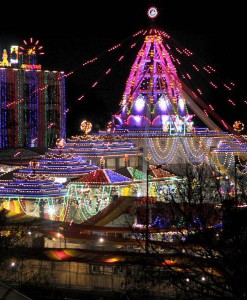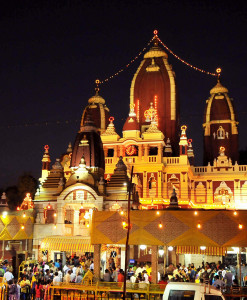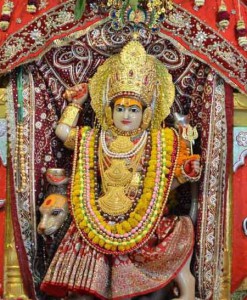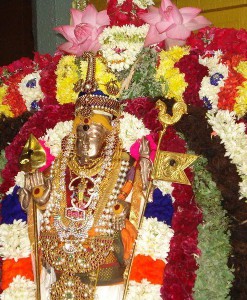No products in the cart.
Yogmaya Temple also known as Jogmaya temple, is an ancient Hindu temple dedicated to Goddess Yogmaya, the sister of Krishna, and situated in Mehrauli, New Delhi, close to the Qutb complex. It is widely believed to be one of the five surviving temples from the Mahabharata period in Delhi.
Yogamaya Temple, also known as “Jogmaya Temple”, is an ancient Hindu temple dedicated to the goddess Yogaya. Yogamaya was the sister of Sri Krishna. This temple is also attributed to the illusory power of god also known as maya. Yogmaya Temple is one of the unique temples in Delhi located in Mehrauli. The temple is also known as one of the five temples from the time of the Hindu epic Mahabharata. According to the local priest, it is one of the 27 temples destroyed by the Ghazni and later the Mamluks. It is the only living temple that has been in use since before the Sultanate.
In 12th-century Jain scriptures, Mehrauli place is also mentioned as Yoginipura, after the temple. The temple is believed to be built by the Pandavas, at the end of Mahabharata war. Mehrauli is one of the seven ancient cities that make up the present state of Delhi. The temple was first renovated during the rule of Mughal Emperor Akbar II (1806–37) by Lala Sethmal.
The temple lies 260 yards from the Iron Pillar in the Qutb complex, and within the Lal Kot walls, the first fortress citadel of Delhi, constructed by the Tomar/Tanwar Rajput King Anangpal I around AD 731 and expanded by King AnangPal II in the 11th century who also constructed LAL KOT.
It is believed that the main idol in the temple was that of Yogmaya or Pure goddess, sister of god Krishna (according to Bhagavata Purana), an incarnation of god Vishnu. Kansa, cousin of Devaki (mother of Krishna) and uncle of Yogmaya and Kansa attempted to kill Yogmaya on Krishna Janmastami day when Krishna was born. But Yogmaya, who was cleverly substituted for Krishna, vanished after predicting Kansa’s death at the hands of her brother Krishna.
Another folk legend is that of Mughal Emperor Akbar II’s association with the temple. His wife was distraught at the incarceration and exile of her son Mirza Jehangir who had fired from a Red Fort window at the then British Resident that had resulted in killing of the resident’s bodyguard. Yogmaya had appeared in her dream and after that the Queen praying for her son’s safe return had vowed to place pankhas made of flowers at the Yogmaya temple and in the nearby Muslim shrine of Qutbuddin Bhaktiar Khaki. This practice set since then is continued to this day in the name of Phool Walon Ki Sair, a festival held for three days during October every year.
Another important fact about this ancient temple is that for more than 5000 years {i.e. the times when the said temple was built}, the people who live around this ancient temple have been taking care of the yogmaya temple. It is said and believed that all these people who are now more than 200 in number had one common ancestor at point in time who, hundreds of years ago started the practice of taking care of the temple by offering prayers to the goddess which includes doing the shingar of the goddess yogmaya twice a day, cleaning the temple, making and distributing prasad to the devotees visiting the temple and other related things. These 200 odd people who now take care of the temple carrying forward the customs and traditions of their forefathers do it voluntarily and amicably. This rich taste of colour and following of customs and tradition and the devotion seen in these people for the goddess Yogmaya is commendable.
The temple built in 1827 is a simple but contemporary structure with an entrance hall and a sanctum sanctorum that houses the main Idol of Yogmaya made of black stone placed in a marble well of 2 ft (0.6 m) width and 1 ft (0.3 m) depth. The sanctum is 17 ft (5.2 m) square with a flat roof over which a truncated shikara (tower) is built. Apart from this tower, a dome is the other feature seen in the temple (pictured). The idol is covered in sequins and cloth.
Two small pankhas (fans) of the same materials are seen suspended over the Idol from the roof. The walled enclosure around the temple is 400 ft (121.9 m) square, with towers at the four corners. Twenty two towers were built within the precincts of the temple at the orders of the Sood Mal, the builder. The floor of the temple was originally made of red stone but since then has been replaced by marble. The main tower above the sanctum is 42 ft (12.8 m) high and has copper plated shikara or pinnacle.
The temple was renovated and reconstructed by Hemu, a Rajput king and converted from ruins back into a temple. An importer’s room was added to this temple during Aurangzeb’s reign, a failed attempt to convert this ancient temple into a mosque. The Mughals. When this kept happening, Aurangzeb gave up this temple. And that’s how it managed to survive. This long room has now been converted into the storehouse of the temple and is used to store food that is used to feed the needy. After the fragmentation of the temple, its original architecture (200-300 BC) could never be preserved. rebuilt, but this temple was repeatedly produced by local residents.
The flowers and sweet meats offered by the Devotees to the goddess are placed over a marble table of 18 inches square and 9 inches height set in front of the idol in the sanctum floor. Bells, otherwise a part of Hindu temples, are not tolled during the worship of the goddess. Wine and meat are forbidden to be offered at the temple and goddess Yoga Maya is stated to be austere and exacting. An interesting display at the temple premises in the past (but now in an open wall panel) was an iron cage of 8 ft (2.4 m) square and10 ft (3.0 m) in height in which two stone tigers are exhibited. A passage, between the temple and the wall panel has flat roof which is covered with the planks overlaid by bricks and mortar and fixed with bells.

The Yogamata Temple, established at a place now called Mehrauli, was named Yoginipura in Jain scriptures in the 12th century. The Yogmaya Temple is considered to be one of the few temples in Delhi from the Mahabharata period, built by the Pandavas after the war. it’s over Mehrauli is one of the seven ancient cities that make up the present state of Delhi. The temple was first renovated during the reign of Mughal Emperor Akbar (1806–37) by LalaSethmal.
By Road: The temple is situated in Mehrauli, New Delhi, close to the Qutb complex. Delhi is well connected, by a network of roads and national highways, with all the major cities in India. The three major bus stands in Delhi are Inter State Bus Terminus (ISBT) at Kashmiri Gate, Sarai Kale-Khan Bus Terminus and Anand Vihar Bus Terminus. Both the government and private transport providers provide frequent bus services. One can also get government as well as private taxis here.
By Rail: The nearest railway station to Yogmaya Temple is Delhi railway station which is 10 Km away from Yogmaya Temple.
By Air: The Temple can be reached through nearest from Indira Gandhi International Airport which is well connected with regular domestic flights.
This temple Opening & Closing times is 5.00 AM and 8.30 PM. During this period major part of the Goddess Yogmaya rituals are performed. Archana, Aarti and Abhisekham are the daily pujas performed.
The annual Phoolwalon-ki-sair Festival (Festival of flower-sellers), which commences from the dargah of Sufi saint, Qutbuddin Bakhtiar Kaki also in Mehrauli, every autumn (Oct-Nov). First started in 1812, the festival has today, become an important inter-faith festivals of Delhi, and includes offering a floral punkah to the deity at the Yogmaya temple.









